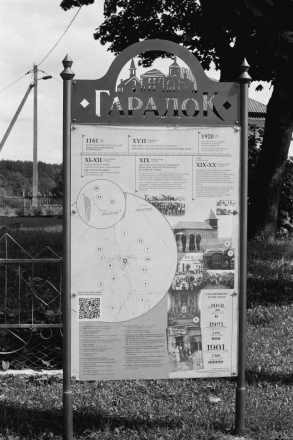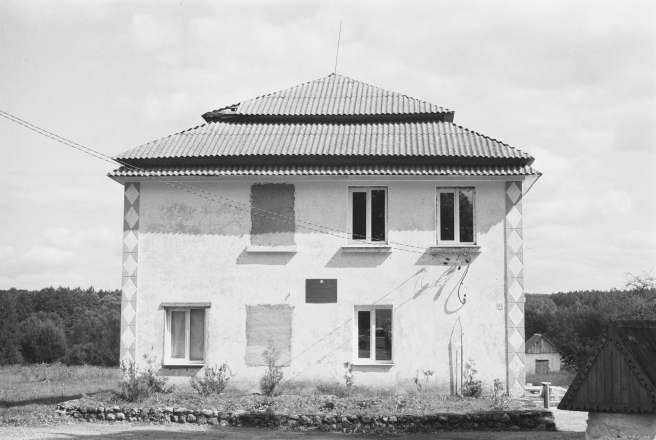Photo excursion in Maladzjechna District 2019 (III/VIII).
Фотавандроўка па Маладзечанскім раёне 2019 г. (III/VIII).
Haradok/Гарадок.
Haradok stands out among Belarusian villages/small towns as a place with an active group of local historians — as reflected in this informative board on the town’s history (notable for its unusually concise and objective account in Belarusian and English):
Included within the landholdings of the Belarusian/Litvin Tyshkjevich (Тышкевіч) noble family, Haradok was a booming small town in the late 19th century: three tanneries, three ceramics factories and a mineral water bottling plant. As in most other small towns and cities in the imperial Russian-imposed Pale of Settlement, the town had a predominantly Jewish population (all but a handful of whom were murdered by the Nazis in 1941-42).
At the same time there were two Orthodox churches, including the solid masonry church of the Holy Trinity (1884). A wooden Roman Catholic church built in 1920 was destroyed during World War II; see photo of the day for December 3 for a view of the new Roman Catholic church.
The number of inhabitants in Haradok reflects the unremitting vicissitudes continuing to affect the Belarusian lands: from 2,500 people in 1901 to 1,420 in 1921 to 400 today.
Interest in local history and the presence of two museums in Haradok reflects the town’s tradition of fostering education: there were two Jewish schools by the late 19th century and in 1920 Kastus’ Tyshkjevich set up a private Belarusian high school.
Pre-World War II architecture/Даваеннае дойлідства:
Former sinagogue (now used as a town administrative building).
Былая сінагога.
Pre-war houses, built when Haradok and the surrounding area were part of the interwar Second Polish Republic. The first house is now the town’s museum of literature.
Даваенныя дамы. У першым доме зараз размешчаны літаратурны музей.



